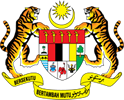Ringkasan Artikel
Malaysian higher education sector develops rapidly since 1990 with currently 20 public universities and 47 private universities offering a variety of courses. Based on the competitive global and regional current market for higher education, university needs to develop a competitive advantage based on a set of unique characteristics and communicate to the relevant stakeholders.
By: Dr. Rosmiza Bidin,
Faculty of Modern Languages and Communication, UPM
Malaysian higher education sector develops rapidly since 1990 with currently 20 public universities and 47 private universities offering a variety of courses. Based on the competitive global and regional current market for higher education, university needs to develop a competitive advantage based on a set of unique characteristics and communicate to the relevant stakeholders.
This sector witness greater changes during past decades: it has become a global business in which education has turned into a service marketed worldwide. It has moved towards a business-like, competitive model of operation which contradicts the traditional role of universities as independent institutions creating and disseminating autonomous knowledge.
Five of the 20 public universities in Malaysia have been assigned research university status with additional funding for research and development, and commercialization of research. The remaining 15 public universities have been categorized as either comprehensive or focus universities. This move is aimed at encouraging excellence among local institutions of higher learning.
Every university needs a brand and an image that can be trusted and believed and that will differentiate it from others. In this competitive higher education markets, the value of a distinctive corporate identity serves as a strategic resource. Universities and other institutions of higher education must compete to attract high-quality students and academic staff at an international level. Hence, competition is no longer limited within national borders.
As education and training become a global business sector, education marketing is developing standards more akin to consumer goods marketing. This transformation may be called “marketization of academic discourse” which refers to the general reconstruction of social life on a market basis and the incorporation of higher education into the commodity market. As a result, a highly promotional discourse has been colonizing universities which were previously unrelated to the economy.
In this prevalent competitive and dynamic environment, it is also important to note that considering only the customers and competitors are not enough. In addition to collecting information on customers and competitors, information needs to be generated regarding essential environmental factors, such as economy, socio culture and technology as well as regarding stakeholders other than customers.
Collecting and disseminating this information is useful in innovatively designing university products and services that can meet customers’ expectations and preferences. These processes relating to market orientation (i.e., intelligence generation, intelligence dissemination and organization wide responsiveness) facilitate innovativeness in higher institutions, which in turn positively influences business performance. - UPM
 |
|
Dr. Rosmiza Bidin,
Faculty of Modern Languages and Communication, UPM |
Tarikh Input: 25/02/2022 | Kemaskini: 25/02/2022 | hairul_nizam
PERKONGSIAN MEDIA



























